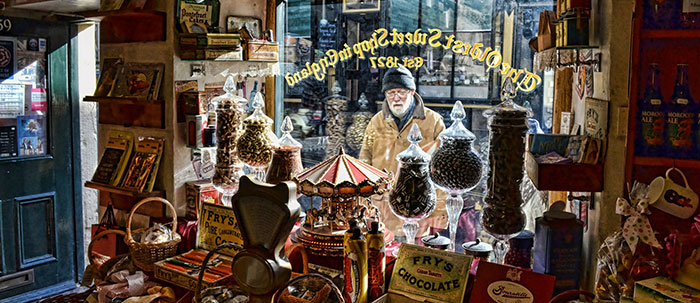Memories Shift Towards Big Picture

Alison Christine via flickr | http://bit.ly/1kmoctS
(Inside Science) -- Perhaps as a child you often visited your grandmother’s house. If friends asked what you had done with your grandmother over the weekend, you might say one time that you had played Scrabble, and the next time that you had baked cookies. Years later, though, you would probably see it differently: Instead of recalling individual visits, you would remember the big picture — that she liked butterscotch and enjoyed playing word games.
Your memory of visiting your grandmother has shifted over time because, whether you are aware of it or not, it has been continually re-processed ever since it was formed.
Cognitive psychologists have suggested that this repeated memory processing helps us to identify patterns and draw connections between events, but evidence clearly connecting the two has been lacking.
However, recent research from Blake Richards and colleagues, performed at the Hospital for Sick Children in Toronto, Ontario, showed that mice are better at recognizing a pattern if more time has elapsed since they learned it. The study, published in Nature Neuroscience, provides a direct link between the time spent re-processing related memories and the ability to integrate information between them.
The team of researchers used a water maze, a circular pool in which mice swim to find a hidden, submerged platform. On the first day of training, the researchers placed the platform in one location in the pool and launched the mice on four trials. The second day, the platform remained fixed across trials — but in a different location than on the first day. This continued for eight days: the platform was moved to a new location that the mice had to find.
The researchers selected the platform's location each day along a small range of positions in the pool according to a statistical distribution known as a bell curve. Over the entire eight-day training period, the platform was most likely to be located in a specific region, but on any given day this pattern was not discernible.
Then, the team tested the mice either one or 30 days later to see how well they picked up on the pattern. They returned the mice to the training arena, but this time did not hide a platform; instead, they monitored the mice’s swimming patterns as they searched.
Though all the mice received the same amount of training, those who were tested after a longer delay spent more time searching in the most probable area based on the training phase, indicating that they were more aware of the big picture: they expected the platform to be in a particular region.
“This research shows that even if all we’re doing is resting, our memories are still changing long after we’ve formed them — multiple memories are getting assimilated into a general picture,” said Richards, now an assistant professor at the University of Toronto.
Richards believes this prevents our brain from getting bogged down in a lifetime of accumulated details, and also allows it to recognize when an event doesn’t fit the normal pattern and may therefore be particularly important.
To investigate the latter phenomenon, Richards and his colleagues tested how mice responded to new information that did not fit the established pattern. They trained mice using their initial eight-day paradigm, but then, after either a short or long delay, presented them with a platform that either matched the expected location based on the original training, or conflicted with it. The next day, they monitored the mice’s swimming patterns in an empty arena just as they had in the first experiment.
When the mice were given a conflicting platform, Richards said, “They did a double-take. Even after they found the platform, they would still go back to where they expected it to be. But when we tested them afterwards, they searched exclusively for the conflicting platform.”
The effect was magnified with a longer delay: With more time to process the memories from their original training, the mice were not only more surprised by information that did not match, but also learned it better. Similarly, you might now distinctly remember the one time your grandmother made peanut butter cookies instead of her usual chocolate chip, even if as a child this visit did not stand out.
The study went a step further, demonstrating a neural basis for these behaviors. According to Richards, many memory researchers believe that memories are initially stored deep inside the brain, in the hippocampus, but then, with processing over time, are transferred to the outer part of the brain in the neocortex for long-term storage. This long-term transfer process is known as systems consolidation.
The Richards study suggests that, within the neocortex, an area known as the prefrontal cortex mediates this systems consolidation. The mice’s sensitivity to the out-of-place platform was reduced when researchers inhibited activity in this brain area. Without the prefrontal cortex, the mice could not recognize the platform location pattern as adeptly, nor could they resolve conflicts between old and new information to appropriately modify their search strategy.
"This study provides the first strong evidence that the prefrontal cortex plays a direct role in memory consolidation through conflict resolution,” said Howard Eichenbaum, a neuroscientist at Boston University who was not involved in the research.
The next step, Richards said, is to tease out the mechanism behind the finding by studying the neural and cellular processes involved.
Laurel Hamers (@Arboreal_Laurel) is a science writer based in Madison, Wisconsin.
